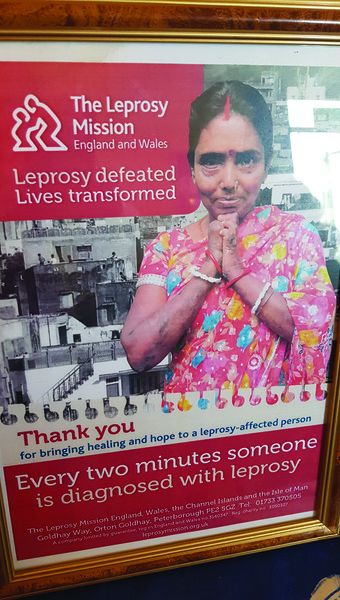Mary Sumner Day Service
This year’s Mary Sumner Day service on 9th August was at All Saints Church, Catherington. The service was led by the Revd Michael Beaver.
After the Greeting the first hymn was “In Christ there is no East or West”. The Readings were read by Diana Reynolds and Hilary Batchelor, and the Address outlined the beginnings and development to the MU in the 20th Century, encouraging members to carry on and develop MU for the 21st Century.
Our second hymn “Thy Hand, O God, has Guided” was followed by the Admission of a new member to Catherington and Clanfield branch by Felicity Keeping, the Diocesan President.
Following the Prayers and final hymn “I heard the Voice of Jesus Say”, all adjourned to the Church Hall for tea and cakes. MU Merchandise was on sale.
Leprosy Mission
The speaker at our September meeting was Julia Mitchell, talking about the Leprosy Mission.
Wellesley Bailey, its founder, had travelled to India and witnessed the effect leprosy had on people there and together with his wife, Alice, set up the charity, originally called the Mission to Lepers, in 1874.
In 1888 the first leprosy hospital was opened in Purulia, West Bengal. It is still open today.
After a visit to Myanmar in 1898 funds were raised to establish the Mawlamyine Christian Leprosy Hospital, which is still the main treatment centre in the country.
In 1906 the work was extended to China, New Zealand, Australia, the Philippines, Japan, Korea, Malaysia and Singapore. When Wellesley Bailey retired in 1917 the mission was running 87 projects in 12 countries.
In the 1940’s Dr Paul Brand researched treatments for disabilities caused by leprosy. He became the first surgeon to use reconstructive surgery on the hands and feet of sufferers. The techniques he pioneered are still being used today.
In the 1950’s Dapsone provided an early cure but was not completely effective and in the 1960’s the leprosy bacteria developed resistance to the drug.
The charity’s name was changed to The Leprosy Mission in 1965 to avoid the negative reaction associated with the word leper.
In 1981 a new cure – Multidrug Therapy (MDT combining Dapsone, Clofazimine and Rifampicin) was developed and is still used today. Every two minutes someone is diagnosed with leprosy. More than 200,000 cases a year.
The Leprosy Mission seeks to reach a goal of zero leprosy by 2035. Its work includes research, treatment, rehabilitation, working to eliminate the stigma and discrimination associated with leprosy. Workers care for the sick, run vocational training schemes, and seek to improve the lives and welfare of those affected by this disease.
This was a most interesting and informative talk.






